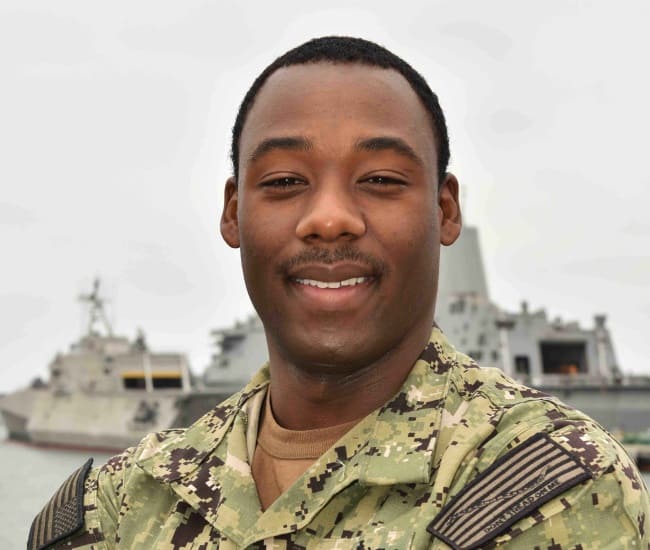
SAN DIEGO – A 2012 Evans High School graduate and Orlando, Florida, native is serving aboard an Avenger mine countermeasure ship designed to clear mines from vital waterways across the globe.
Lt.j.g. Johnathon Hollis is a Navy main propulsion officer serving aboard USS Champion under the command of Commander, Naval Surface Force, U.S. Pacific Fleet.
As a Navy main propulsion officer, Hollis is responsible for the supervision and management of engineering programs and personnel.
“I enjoy the camaraderie between the crew, and the fact that I’m able to lead at such a young age,” said Hollis.
Hollis credits success in the Navy to lessons he learned in Orlando.
“Being determined and having a hard work ethic is key to my success here and through life,” he said.
Mine countermeasure ships are designed as mine sweepers/hunter-killers capable of finding, classifying and destroying moored and bottom mines. These ships use sonar and video systems, cable cutters and a mine detonating device that can be released and detonated by remote control.
Hunting mines is a slow, laborious task that requires a ship to stay in a small area until it’s done, according to the Navy. Since 1945, mines have sunk almost four times more U.S. ships than all other threats combined, said Navy officials.
The worldwide threat, which today totals more than a million weapons of some 300 different types, comprises rudimentary but still-dangerous World War I-era contact mines to highly sophisticated, multiple-influence and programmable weapons, reports the Navy. These figures are for sea mines, proper; they do not include underwater-improvised explosive devices that can be fashioned from fuel bladders, 50-gallon drums, and even discarded refrigerators.
The ships deploy a remotely operated mine disposal system and a remotely operated vehicle (ROV) mine neutralization system. The disposal system detects, locates, classifies and neutralizes moored mines and mines resting on the seabed. The vehicle uses high-frequency, high-resolution sonar, low light level television, cable cutters and explosive charges to detect and dispose of mines, while remaining tethered to the vessel by a cable and under control of the vessel. Each ship accommodates a crew of 80.
“Since it’s a small crew I’m responsible for a lot more programs than my peers would be on another ship,” Hollis said.
As part of the Navy, Hollis explained that sailors are helping to build a legacy that will last beyond their lifetimes, including helping to develop new war-fighting capabilities to continue the Navy’s success on the world’s oceans.
“My mother was in the Army and my two older brothers were in the Army. My uncle was in the Marine Corps so I grew up in a military family,” Hollis said. “It’s a very soft spot in my heart to be in the Navy and just to have an opportunity to serve my country. I’m honored and thankful for it.”


